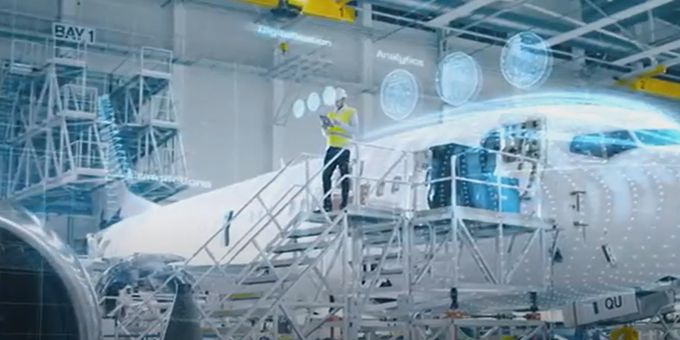For example, in many organizations, different business units buy similar products from multiple suppliers instead of buying everything from one supplier and benefiting from economies of scale. Procurement can see that, but the rest of the organization can’t.
 Mitigating Supply Chain Risk through Bold Leadership, Transparency and Procurement
Mitigating Supply Chain Risk through Bold Leadership, Transparency and Procurement

Dawn Tiura, President and CEO | Sourcing Industry Group (SIG)
Tell us about yourself and your role with Sourcing Industry Group (SIG).
I am the President and CEO of Sourcing Industry Group (SIG), the world’s premier membership association representing Fortune 500 and Global 1000 companies with a combined spend of $17 trillion USD in sourcing and outsourcing. SIG’s goal and the purpose of my role is to elevate the strategic impact of these organizations on their company’s top and bottom lines. I have a personal passion to improve sustainability in global supply chains; I support organizations in meeting the 17 Sustainable Development Goals as part of SIG’s UN Alliance and I am ambassador to the Sustainable Procurement Pledge.
Today, Procurement leaders have a seat at the table in e-staff meetings. How has the role changed over the past few years?
It’s changed dramatically. In the past, we were seen as overhead, not as a strategic partner. Procurement teams were just buyers who delivered what other departments told them to purchase. Organizations viewed Procurement as the bottleneck between what they wanted and when they received it. In reality, Procurement sees all the waste and redundancy that exists in the supply chain and has a significant impact on a business’s bottom line, and is increasingly adding value in ways beyond cost.
For example, in many organizations, different business units buy similar products from multiple suppliers instead of buying everything from one supplier and benefiting from economies of scale. Procurement can see that, but the rest of the organization can’t. Procurement professionals are on the field, impacting game play. They see the action as it’s unfolding and can hedge or even eliminate risk before it detrimentally impacts the organization. And Procurement is increasingly helping with more strategic initiatives as well, from driving sustainability to driving supplier-led innovation and much more.
What kinds of risk can Procurement help identify and prevent?
We have tremendous insight into every part of the Procurement process and all of the players involved, especially now with the help of eProcurement platforms like Ivalua. We can identify and root out something as threatening as human trafficking in the supply chain which, unfortunately, is happening at alarming rates. We can ensure our organizations aren’t funding conflict minerals or guerilla groups. We can employ best practices that help us avoid buying products from corrupt companies or countries. And we can run security checks on suppliers to make sure we don’t experience a cyber security incident with a company that’s under contract. At the very least, such incidents can impact revenue and employee morale. At worst, they can result in significant financial damage or even put an organization completely out of business.
Take, for example, the incident at Target that happened in 2013. An HVAC supplier was monitoring Target’s HVAC system with a computer that had been infected with a worm years before. That worm was waiting to be activated — all it needed was the presence of credit card data. As soon as the supplier connected the computer to Target’s infrastructure behind the firewall, the worm was activated and recognized credit card data in the system. It released the data to the party perpetrating the fraud. That’s how Target’s customer data was compromised — and it cost Target $18.5 million, plus significant reputational damage.
This threat is a relatively new one for Procurement. Years ago, I would never have asked a supplier about their cyber security policies and controls. I would never have thought to run a cyber security check on an HVAC company. But today, Procurement is tasked with asking these questions, and we’ve become the stopgap for various types of third-party risk. In fact, over the past couple of years, one of my team’s primary roles at SIG has been protecting the company against third-party fraud.
So, Procurement leaders must have a much broader skill set and be able to adapt quickly as new challenges arise.
Given the changing role of Procurement, what leadership qualities are necessary today?
Part of being a great leader is knowing when to be charging ahead, leading the troops up the hill and when to jump off the horse, get behind them and give them a push. Say your Procurement organization is accustomed to using an ERP system, and you decide to introduce an eProcurement software platform like Ivalua. That’s a big change, and it can incite fear in a lot of people. They may worry about not being able to learn it, or think their jobs might be eliminated because of it.
In such situations, you have to be the cheerleader as well as a proactive and effective communicator. You have to provide information and reassurance. This isn’t the time to shoot from the hip — you need to rally your troops and let them know there’s a safety net. That makes them want to follow you. That makes them feel that change is safe and attainable.
Think of a group of adventurers crossing a chasm. The person who crosses first can throw a rope to the next person and charge ahead across the bridge. Or, they can cross the bridge first, check every board and link to make sure it’s well constructed, and install a safety net beneath it, just in case. Then they can go back to get the others, and lead everyone across the bridge.
It’s a leader’s job to make that initial voyage to make sure you’re not putting your team at risk. When you do, they’ll trust you. They’ll know you have their back, and the panic they’re feeling will subside. Then they’ll follow your lead.
Change management experts say it takes people about three years of practicing a new behavior before that behavior becomes the new normal. So, in my bridge analogy, some of the adventurers will run back over the bridge many times where it’s safe and comfortable. A good leader has to be prepared for that and remain consistent and supportive throughout the process.
What leadership traits won’t work under these circumstances?
Lying is the big one. You can’t lie or sugar coat reality because your employees won’t believe you in the future. People want to work for honest and transparent leaders that they can trust. Being secretive or withholding information also won’t work, because people can be anxious and they want answers. You need to give employees permission to ask hard questions, such as “Is my job safe?” or “Is this new virtual Summit going to be successful?” And you can’t be inflexible. In addition to the emotional and mental strain, the COVID-19 pandemic has placed enormous pressure on employees to juggle multiple responsibilities. They may need to adjust their schedules or cancel meetings last-minute to attend to family matters. Being inflexible will damage morale and cause ill will among your team members.
I tend to be no-nonsense in my communication style — I want fast answers so we can get on with our work. But in times of crisis, that can come off as insensitive or out of touch. Now, it’s critically important to check in with your employees on a personal level and give them the space they need to express their emotions. I need to model the empathy we must all show each other right now. I end conversations with “Stay healthy” and “Be safe” — phrases I would never have used prior to the outbreak.
I think we’ve all realized how fragile human life is, and how important we all are to business continuity, as well. Robots can’t run the business.
How are Procurement executives adapting to the current challenges, such as those they’re facing as a result of the COVID-19 pandemic?
A lot has changed as a result of shelter-in place orders, and that’s true for all businesses and all business units, including Procurement. Leading during a time like this requires you to pull different skills and traits out of your arsenal.
For example, listening skills and intuition are critical right now. All interaction is now virtual, which means we cannot pick up on physical clues about someone’s emotional state, as we would in a face-to-face interaction. If I give someone information over a Zoom meeting, for example, and they don’t understand but are afraid to say so, I might not be able to see or pick up on their confusion as I would in an in-person meeting. So, heightened intuition is extremely important.
Leaders must also be much more empathic. Employees are very likely distracted and overwhelmed right now. Many are homeschooling their children or dealing with feelings of loss and isolation in addition to trying to be productive at work. We have to increase our emotional quotient and not only be sensitive to employees’ challenges but provide additional direction and support.
In the near future do you see Procurement going back to business as usual or has it changed for the long term?
Eventually business will go back to normal, but it will be a new normal. I don’t think things will ever be quite the same. The skills Procurement leaders are developing in these uncertain times will be indispensable moving forward.
I think we’ll come out of this stronger than ever and be able to apply lessons learned to create more supply chain efficiencies and cost reductions. We’ll be better prepared to handle future crises, because we’ve realized that practices such as sole-sourcing create dangerous dependencies that can impact our ability to meet business needs. We’ll accelerate digital transformation initiatives that we’ve realized are critical to business continuity and productivity. And because we’ve gotten personal with the people we work with — our employees, our suppliers and our partners — we will understand each other a little better, and we’ll work together more effectively.
Dawn Tiura is the President and CEO of Sourcing Industry Group (SIG), the world’s premier  membership association representing Fortune 500 and Global 1000 companies with a combined spend of $17 trillion USD in sourcing and outsourcing. SIG’s goal is to elevate the strategic impact of these organizations on their company’s top and bottom lines. Dawn is also the President of SIG University, an online and in-person training and education organization that offers certifications in sourcing, governance, risk management and intelligent automation. Dawn has a passion to improve sustainability in global supply chains, she helps organizations to meet the 17 Sustainable Development Goals as part of SIG’s UN Alliance and is an ambassador to the Sustainable Procurement Pledge.
membership association representing Fortune 500 and Global 1000 companies with a combined spend of $17 trillion USD in sourcing and outsourcing. SIG’s goal is to elevate the strategic impact of these organizations on their company’s top and bottom lines. Dawn is also the President of SIG University, an online and in-person training and education organization that offers certifications in sourcing, governance, risk management and intelligent automation. Dawn has a passion to improve sustainability in global supply chains, she helps organizations to meet the 17 Sustainable Development Goals as part of SIG’s UN Alliance and is an ambassador to the Sustainable Procurement Pledge.
The content & opinions in this article are the author’s and do not necessarily represent the views of ManufacturingTomorrow
Comments (0)
This post does not have any comments. Be the first to leave a comment below.
Featured Product

